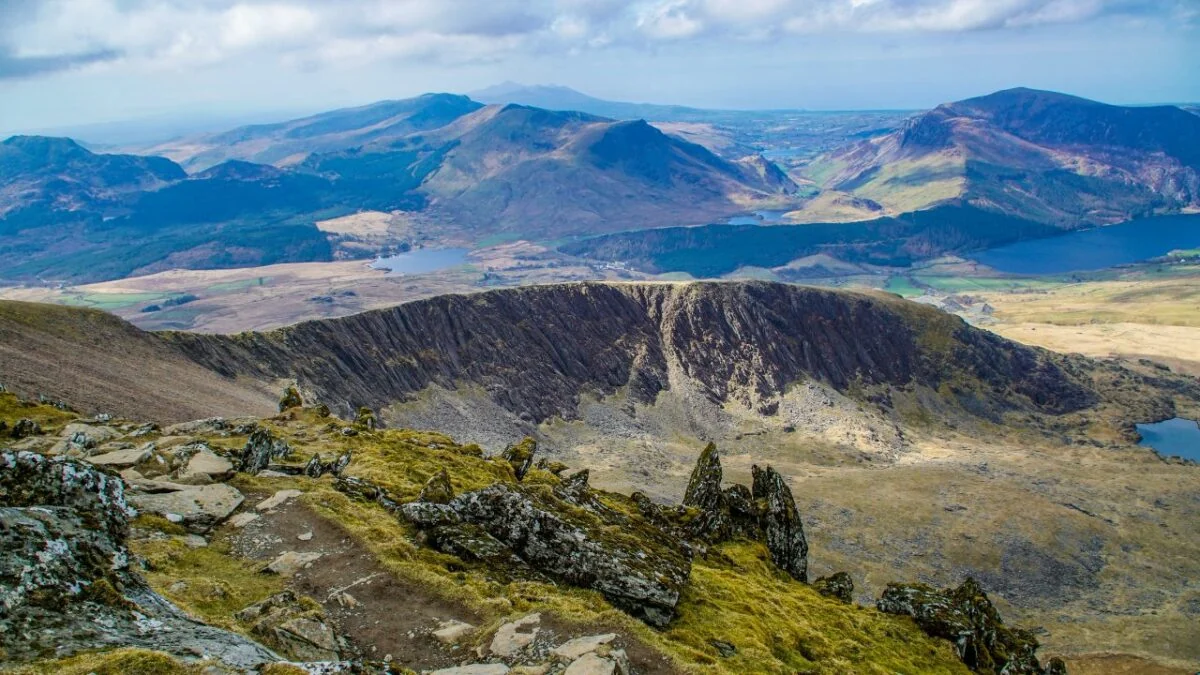Wild camping in Wales is a truly magical experience thanks to the country’s numerous glassy lakes, dramatic coastlines, and ancient woodlands. Three breathtaking national parks within Wales – Pembrokeshire Coast, Brecon Beacons, and Snowdonia – were founded over half a century ago and cover around 20% of the country’s total area.
They offer plenty of sites to stay at that feel far from civilisation and immerse yourself in nature. My list of the best wild camping in Wales includes some of the most remote – and some of the most rugged – you’ll find anywhere in the country.
Map of the Best Wild Camping Areas in Wales
You can easily find the locations of the best wild camping ares in Wales using this map.
Best Spots for Wild Camping in Wales
Wild Camping in Snowdonia
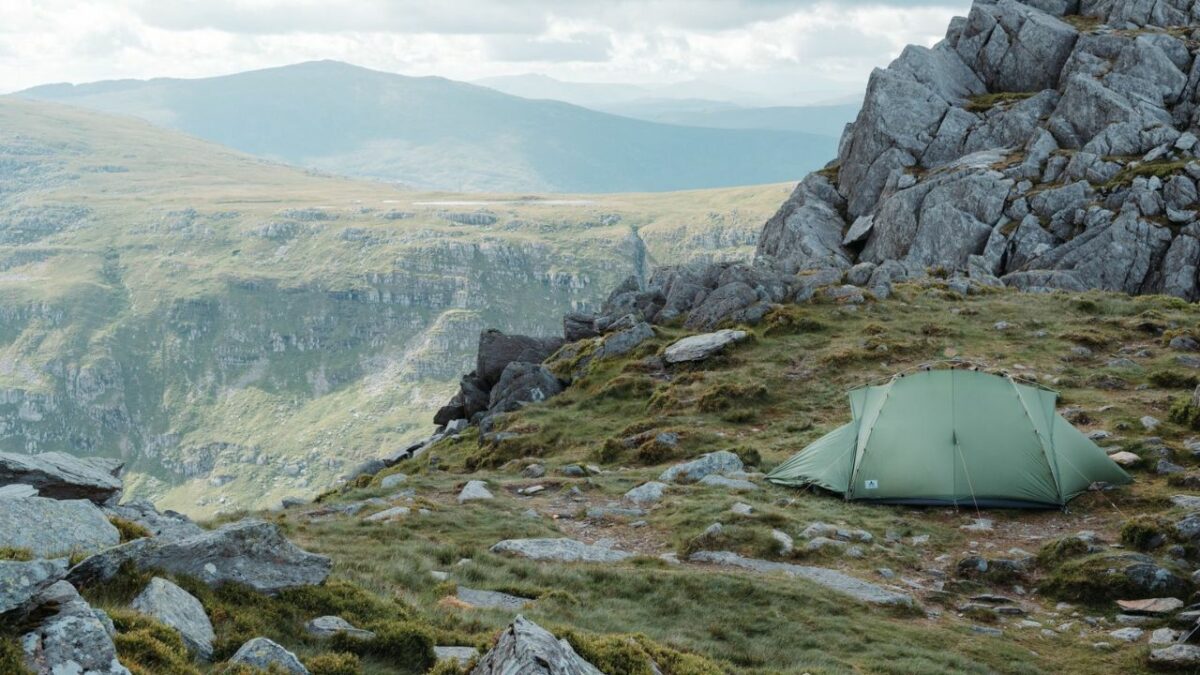
The flagship national park of Wales – Snowdonia – attracts millions of outdoor enthusiasts every year. While there are loads of full-service campsites in this region, those willing to wander off the beaten track will appreciate wild camping in Snowdonia.
For a truly relaxing experience, head to the park’s northern edge, where you’ll find the gateway to the Carneddau Range – the Cwm Caseg Valley. Here, you will discover some of Wales’s most scenic wild camping, including a secluded spot beside an idyllic mountain lake (more on that later).
There are some great flat spots at the summit of Cader Idris if you want to climb a mountain. Another glorious peak is Moel Ysgyfarnogod. However, when wild camping on summits like these, check the winds – they can be extreme and easily ruin the whole experience.
Cwm Caseg Tarn
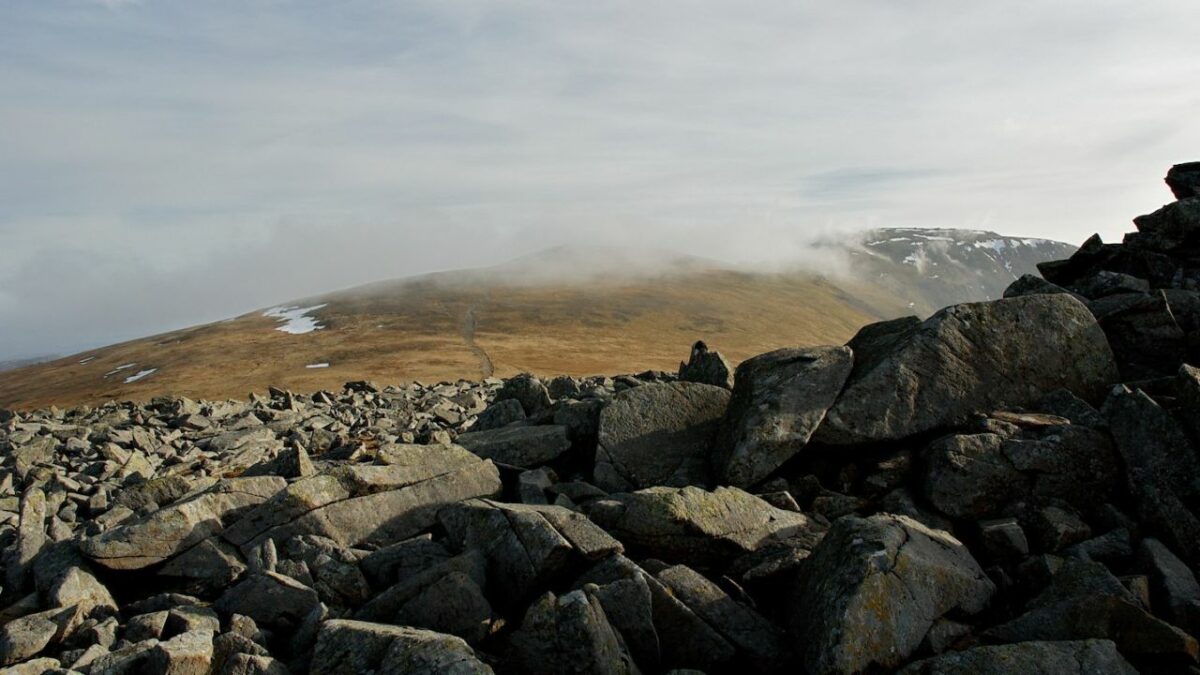
Although wild camping at Cwm Caseg Tarn is lovely on its own, the surrounding landscape elevates it to exceptional status. The alpine amphitheatre that encloses this crystalline mountain lake boasts several iconic peaks that reach above 3000 feet, with the most impressive being Carnedd Llewelyn (3491 ft) and Yr Elen (3156 ft).
The best place to pitch a tent here is along the lake’s southernmost shore. There, you will find dry, flat ground covered with a layer of soft and short grass.
Wild Camping on the Welsh Coast
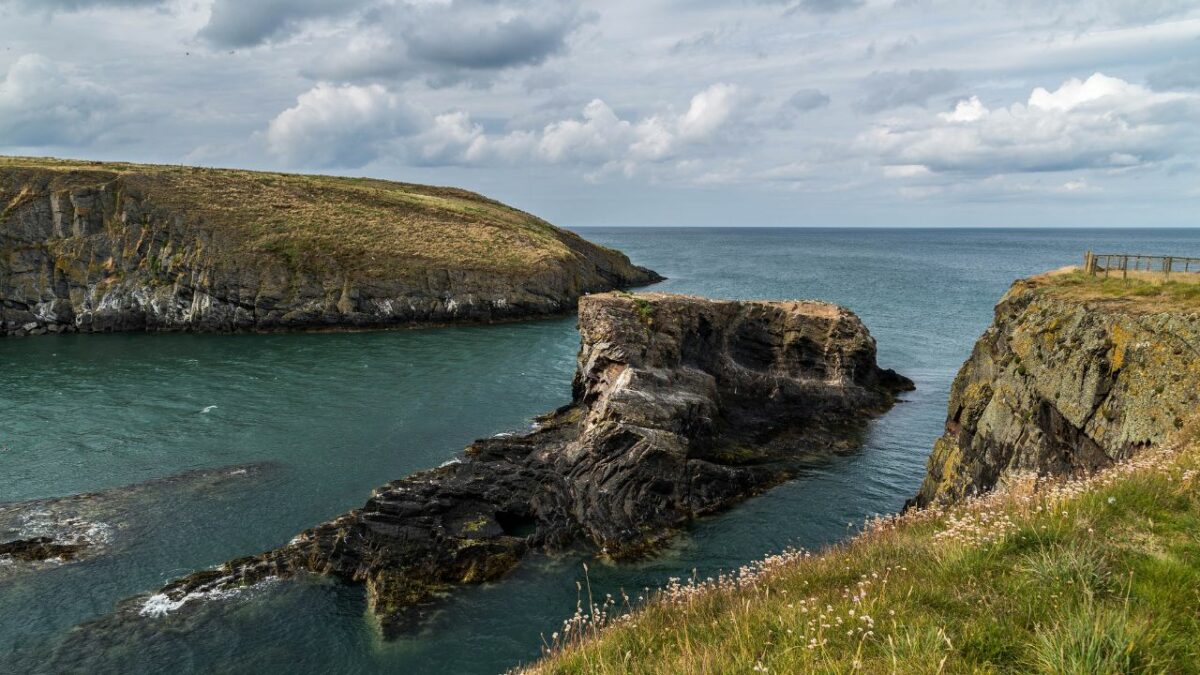
As the world’s first uninterrupted national coastal walking route, the Wales Coast Path stretches for 840 miles. Those taking on the path in its entirety, or tackling portions of it, may consider camping along the way.
While wild camping is a tradition on many hiking routes around the globe, one must follow the same rules as elsewhere in Wales along the Welsh coast path. Campers need to obtain permission for staying on any National Trust-owned land and on footpaths running through private farmlands.
Porth Lago, Lleyn Peninsula
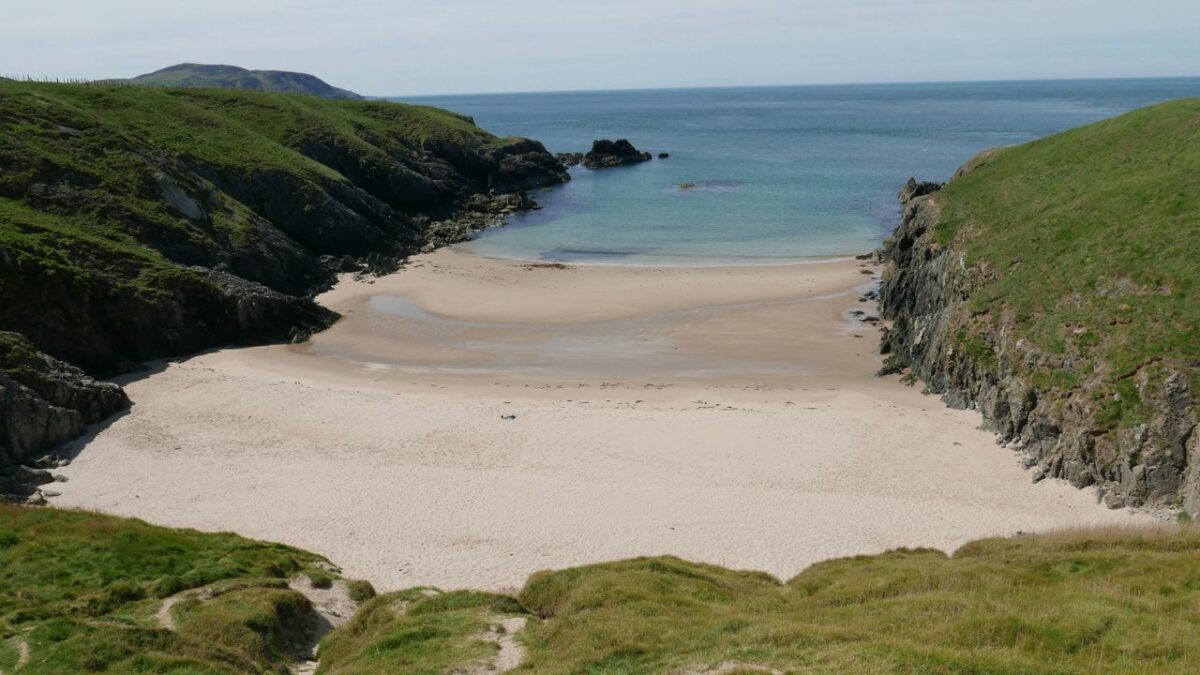
Often overlooked, Lleyn Peninsula has a timeless island feel. Expect green hills, rugged cliffs, and long sandy beaches. It’s like all of these places are tailor-made for tents!
However, the best one is Porth Lago: a little-known, well-sheltered, and sunset-facing beach with clear waters, golden sands, and an ancient fort on the hill above. By paying the parking fee at the nearby farm, you’ll be allowed to wild camp here. Get the barbecue going and get some wild thyme for seasoning – fishing here is excellent.
Brecon Beacons Wild Camping
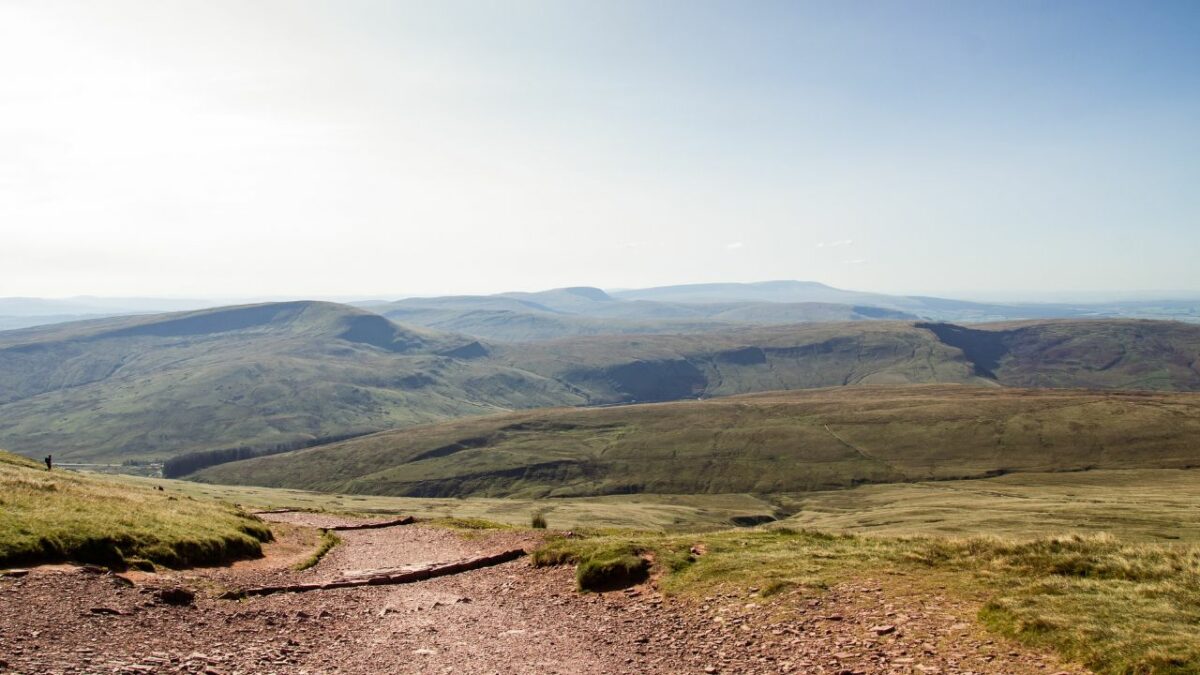
Within an hour’s drive of Cardiff is the beautiful mountainous region of Mid Wales that offers fantastic cycling, great walking, and breathtaking scenery.
In the Brecon Beacons National Park, things are a little easier for wild campers despite the region being subject to the same laws as the rest of the country. Wild campers here should also seek consent from landowners. Still, the NPA (National Park Authority) has compiled a convenient list of landowners who have allowed tent-pitching on their properties.
Don’t expect facilities, though – I’m not talking about farm campsites but the basic wild camping spots spread around the region. As a result, you’ll need to come here fully prepared, but at least you won’t have to worry about being moved. Visit the Brecon Beacons Visitor Centre to get a list of suggested wild camping spots or read our guide to wild camping in Brecon Beacons.
Black Mountains Wild Camping
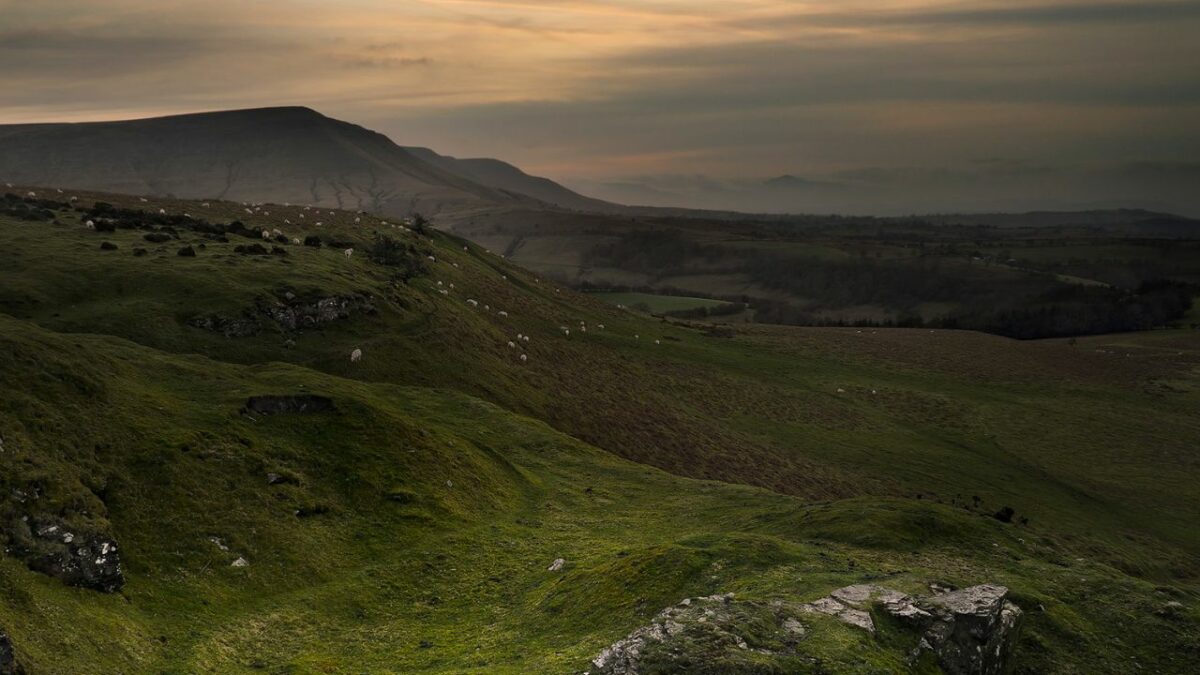
A part of the Brecon Beacons range mentioned above, the Black Mountains are renowned for their wild terrain – an ideal destination for any wild camper as they are home to some of the best wild camping spots in the United Kingdom. Deep valleys lie between long and wide ridges that run parallel to one another in this fabulous region.
Pitch high only if the weather forecast looks good since the mountain tops can be very exposed in bad weather. The area’s valleys generally feature enclosed land, but some are wilder and full of hidden, subtle spots.
You’ll find plenty of places to wild camp once you reach the ridges. Most are covered in heather or grass, and there are usually plenty of flat spots for tent pitching. I enjoyed camping in the Black Mountains mainly because the journey to these spots is as exhilarating as staying at them.
Grwyne Fawr Bothy
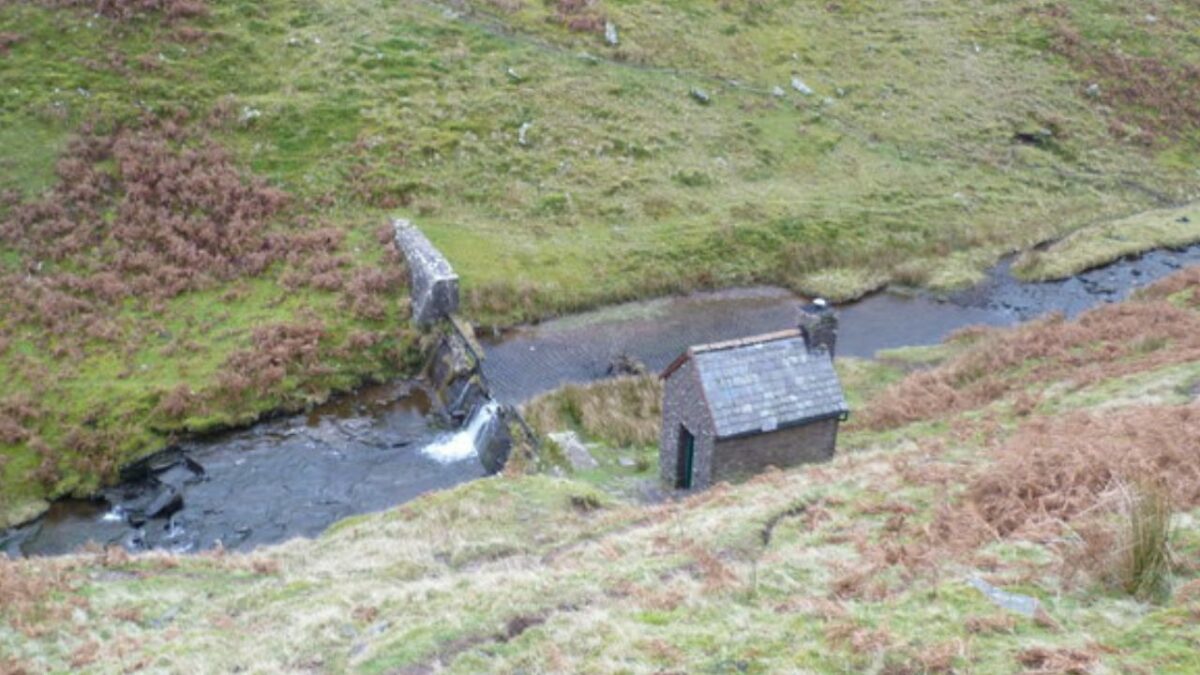
On the internet, one can find many stories about Grwyne Fawr, a “remote” bothy nestled into the “most obscure” nook of the Black Mountains. Many of these stories make it seem like getting to the bothy is an arduous task. In reality, it’s just an hour’s walk from the Mynydd Du forestry car park.
The bothy is tiny, comfortable, and quite welcoming, although there’s a good chance you’ll find it in a messy state. When I first visited Grwyne Fawr a few years back, I was greeted by a load of rubbish the previous attendants left: dirty food containers, empty cans, and broken bottles all over the place. Bring fuel to get the fire going and get enough sleep to catch an atmospheric sunrise on the walkout.
Trefalen Farm Camping in Pembrokeshire
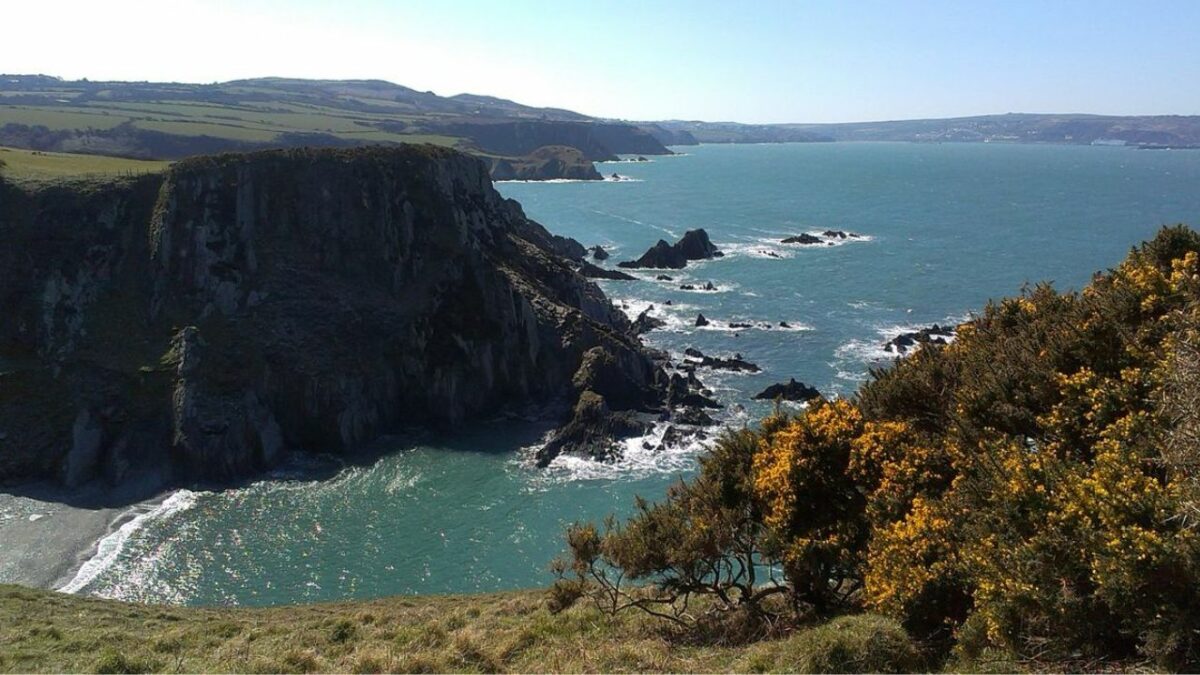
Astonishing sea views, centuries-old castles, and ancient hillforts await in Pembrokeshire. Wild camping here is certainly possible if you approach it correctly.
Camping along the Pembrokeshire Coast Path National Trail is bound to immerse you in the breathtaking scenery. What’s more, you’ll be able to stay at a charming B&B in a nearby village. However, that’s not much fun, is it? After all, wild camping is supposed to allow you to hear crashing waves and see sunrises lit up in fiery colours.
You’ll want to head over to Trefalen Farm for something like that. This is a set of excellently located fields less than 5 miles south of Pembroke, right beside Broad Haven beach. The farm’s basic facilities – which aren’t crucial to wild campers anyway – are compensated for with the magnificent beach mentioned above and its spectacular views.
You will find two secret coves in the lower tent-pitching field. While wild camping here, you’ll also want to visit a tiny hermitage tucked into the cliffs – just walk along to St Govan’s Head. Other things worth seeing in the area include several extraordinary sea caves, a blue crater lagoon, and wildlife-rich lily ponds, all of which are along the coast.
Wild Camping in the Berwyn Mountains
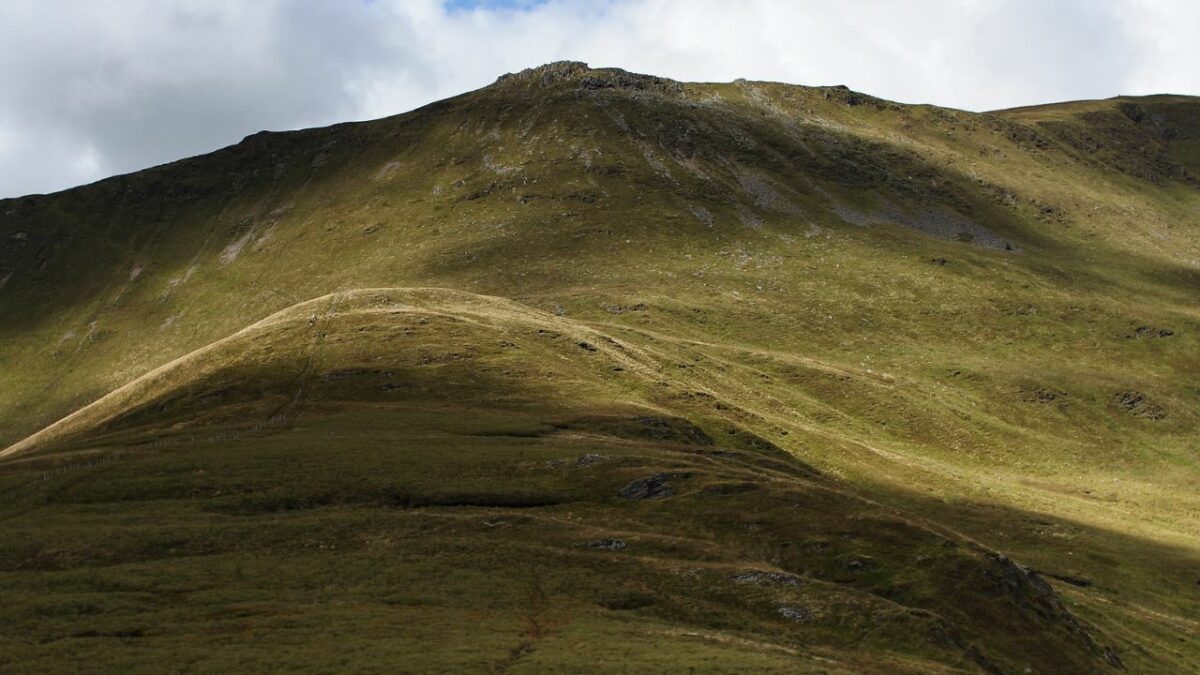
In the Berwyn Mountains, you’ll find windswept moorlands, rugged peaks, and deep valleys. Wild camping is the best way to enjoy this remote part of Wales. Most campers opt for the adjacent Snowdonia National Park, thus keeping Berwyn Mountains uncrowded. Stargazing is unmatched, and the scenery is astounding.
Several peaks offer a good view of the tallest peak in Wales – Snowdon. While Cadair Berwyn – the highest point in the range – presents a challenge, its views are breathtaking. A word of advice: the winds here can be bitter cold, so pack many warm layers.
A 19th-century slate mine at Moel Fferna is an intriguing place to explore if you’re looking for something more offbeat. This lesser-known corner of Wales boasts yet another uncrowded wild camping destination in the form of Moel Sych, the third-highest summit in the Berwyn range.
Wild Camping in Carmarthenshire
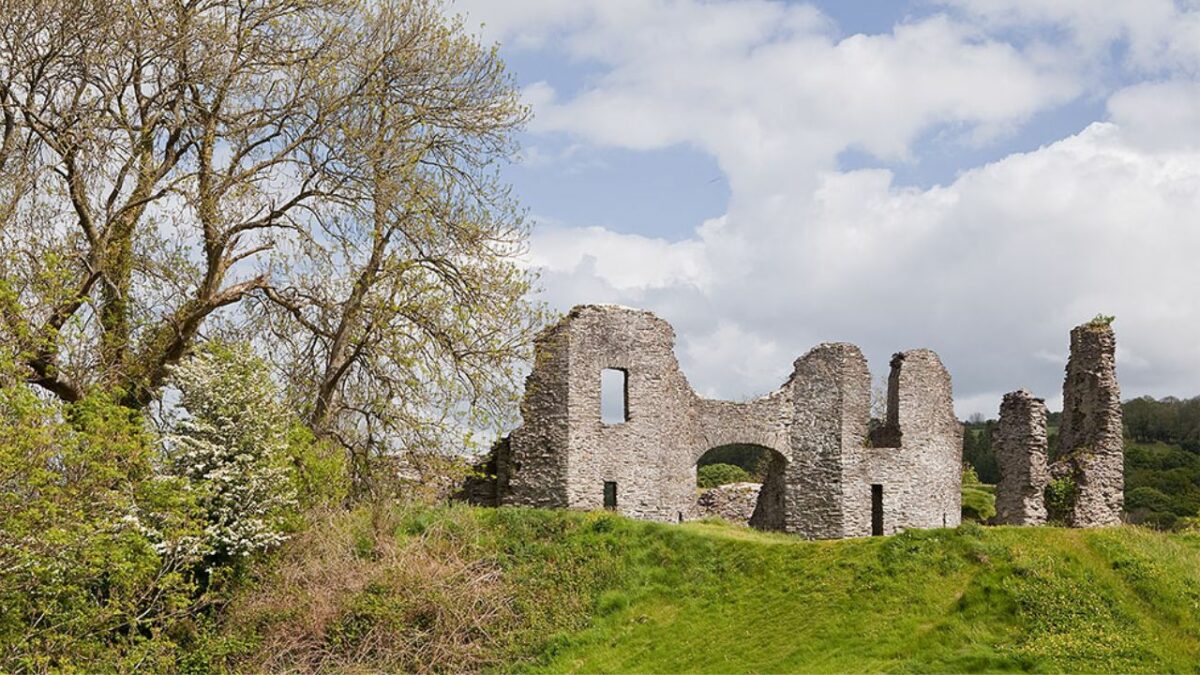
An outdoor adventure in Carmarthenshire is bound to reset your batteries. Wild camping spots abound in this region nicknamed the “Garden of Wales.”
Enjoy solitude on hilltop farms or discover picturesque wildflower meadows. If you’re a history buff, you’ll appreciate that one of the region’s top-class wild camping areas – the Tywi Valley – is peppered with ancient castles. Another excellent place to spend a night or two is the Taf Estuary.
Fortunately, those looking for more comfort can check in at Milkwood Camping. Back-to-basics wild camping is a hallmark of this hidden gem. However, most people who stay here don’t complain about its wood-fired sauna and the Scandinavian-style washhouse. After all, long hikes call for the perfect antidote.
While in Carmarthenshire, don’t miss the National Botanic Garden of Wales. The place is open year-round and exhibits plants from all over the globe. The Great Glasshouse, with its crystalline streams and tumbling waterfalls, is a must-visit.
For more great camping spots in the UK, see our Lake District wild camping guide.
Is Wild Camping Legal in Wales?
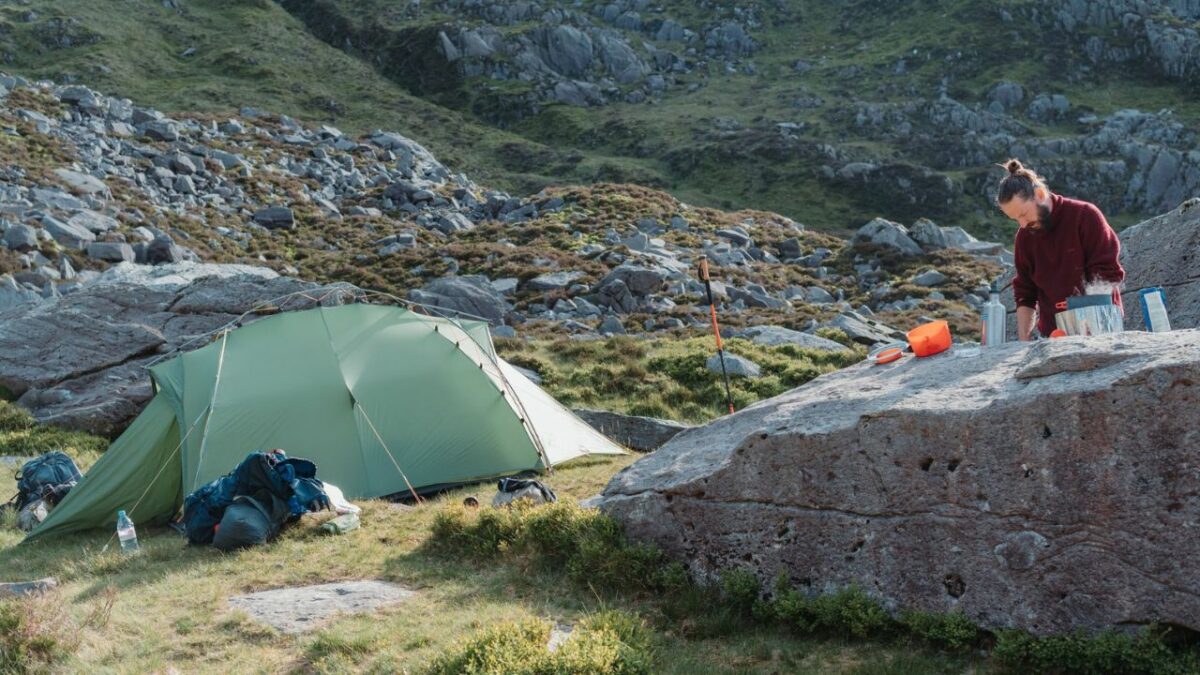
Although wild camping is officially prohibited in Wales, you may park your motorhome or pitch your tent if the property owner permits you. As you might imagine, getting this permission is sometimes easier said than done. But,as long as you are discreet, and stick to the 7 Leave No Trace Principles, you probably won’t get in trouble if you don’t have official permission. It’s best to pitch your tent after sundown and leave early in the morning.
Wild camping in Wales is tolerated if you are walking one of the country’s many scenic trails, like the Pembrokeshire Coast Path National Trail. This is because long-distance hikes take more time to complete, requiring a place to sleep.
While hiking or walking in Wales, wild camping is generally only accepted in spots away from settlements or cultivated lands and off the beaten track.
Areas You Must Avoid
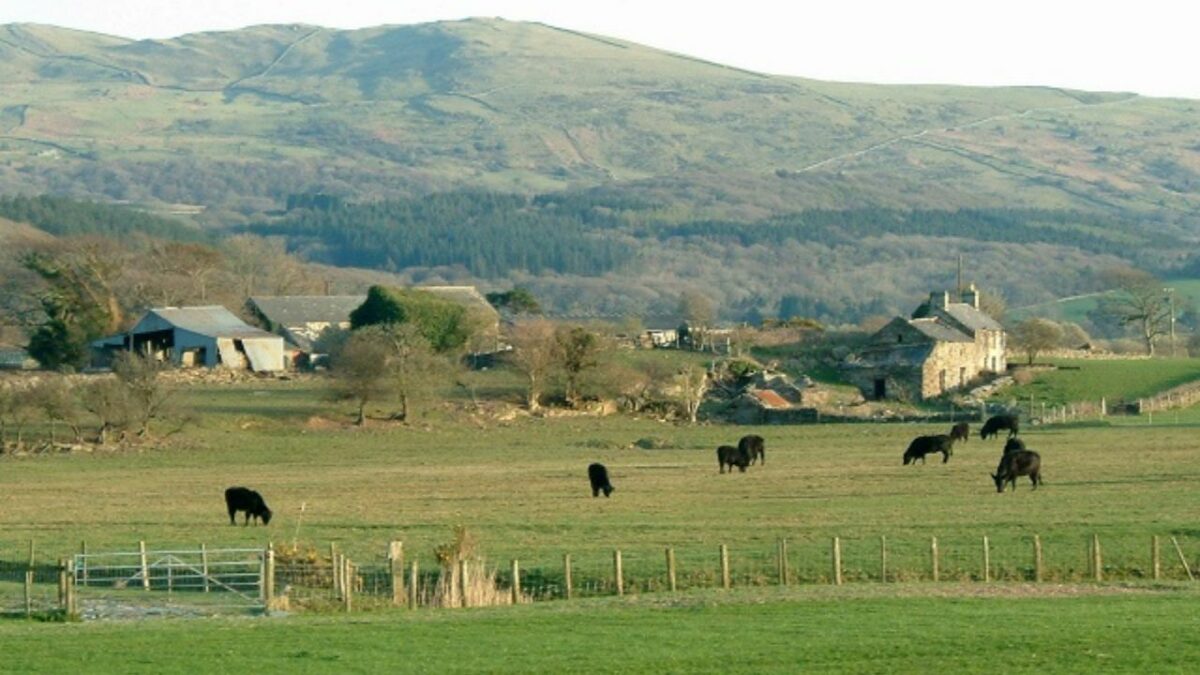
- Cultivated land
- Beaches
- Land close to roads, settlements, and houses
- Quarries and building sites
- Schools and school lands
- Sports fields when they’re in use
- Lands attached to buildings (such as backyards)
- Entering and passing through buildings
Tips for Overnight Parking When Camping in Wales
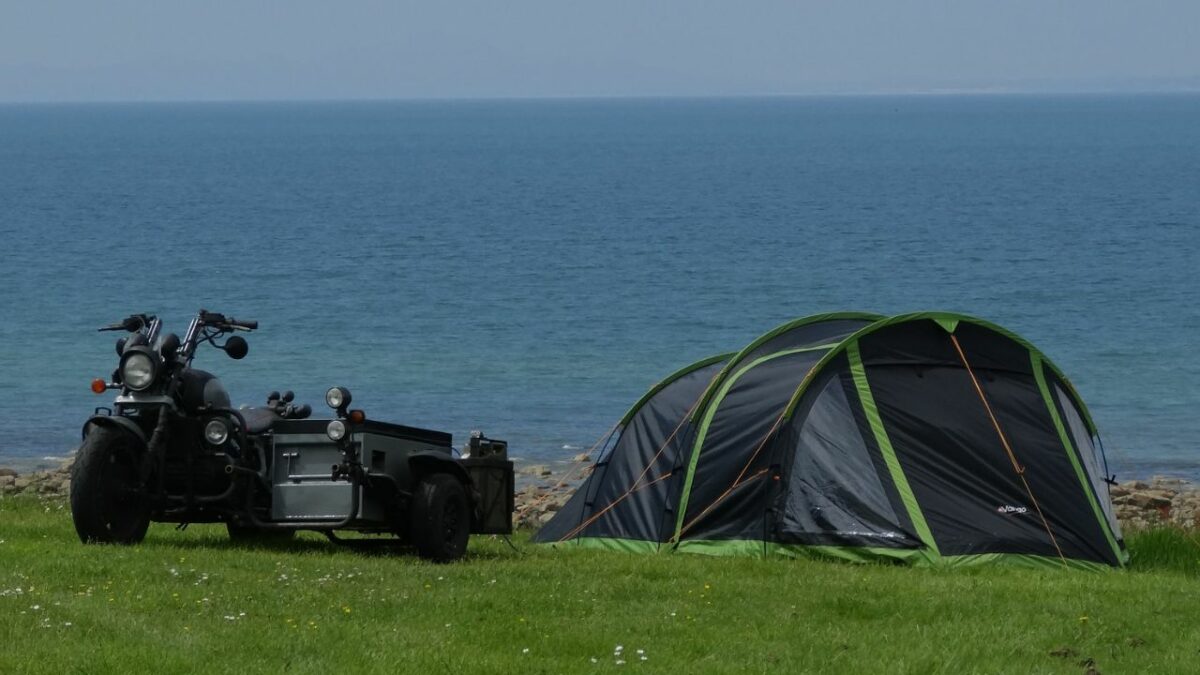
Being on your best behaviour is the safest way to ensure you won’t have trouble with overnight parking, which is quite a grey area in Wales (just like wild camping). Here are a few tips:
- Feel free to ask when you’re in doubt whether wild camping at a particular location is permitted. If not, try another place. Move respectfully if you are asked to do so.
- Find out what other travellers have experienced by chatting with them. People like bragging about the great, uncrowded places they’ve found.
- Do not leave food scraps anywhere and don’t litter.
- Keep your stay short, and leave the next day in the morning. You’re better off at a designated campsite if you want to stay longer and enjoy your afternoons.
- Don’t move things around the area, and keep the noise down so that others nearby, including wild animals, are not disturbed.
- Ideally, you should stay near a public restroom or have a self-contained vehicle if camping overnight. If this is not possible for some reason, always answer the “call of nature” at least 30 meters away from any paths or water sources. Remember to bury the waste at least 15 cm deep. Be sure to properly dispose of sanitary items – like toilet paper.
- In an open area, a fire can spread quickly and cause significant damage. You should only make campfires only at designated fire pits in campsites.
Where to Next?
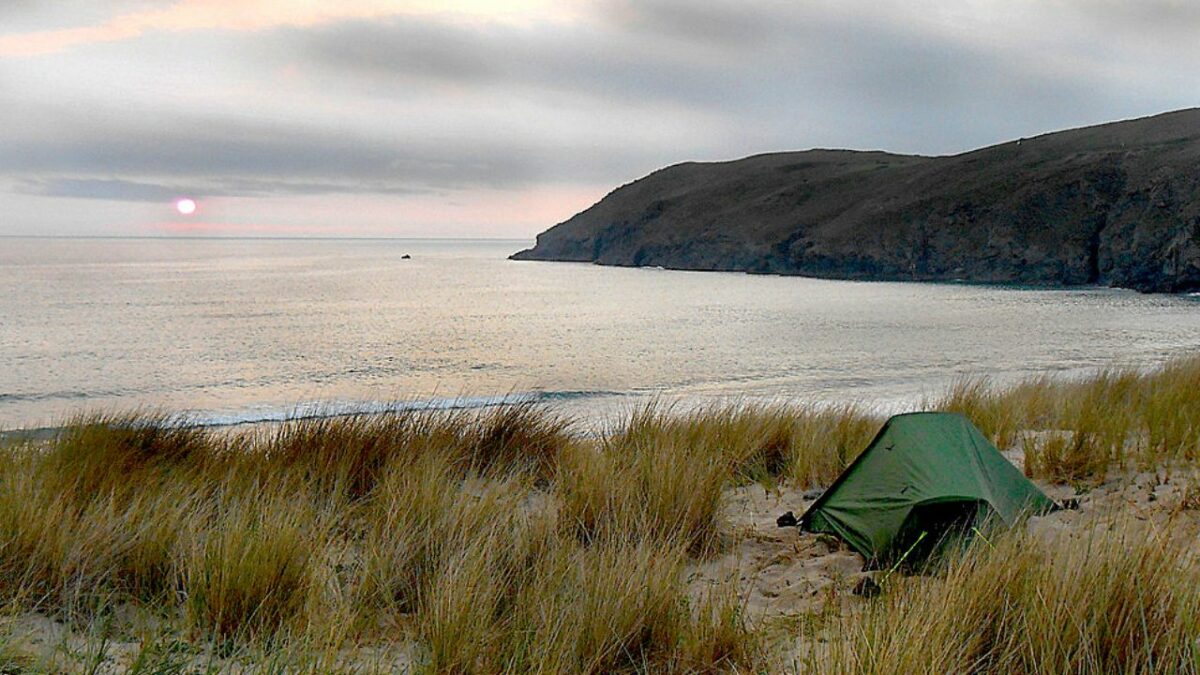
Not sure where to go after Wales? consider going south – to the exquisite countryside of Cornwall. With its rolling hills, soaring cliffs, and magnificent sandy beaches, this region of England stands as one of the best wild camping destinations in the whole of the UK. Check out my article on the best wild camping in Cornwall for a safe and memorable adventure on the South West Peninsula as well as my guide to wild camping in Northern Ireland.

I love hiking, backpacking, and camping. From the Camino de Santiago to the West Highland Way in Scotland or simply a great day hike on the weekend. Hiking refreshes me, my mind, and keeps my body reasonably fit. So far I have walked three Camino routes and many other long distance hikes in the UK, Canada, and around the rest of Europe. One of the best was my hike up Ben Nevis.

